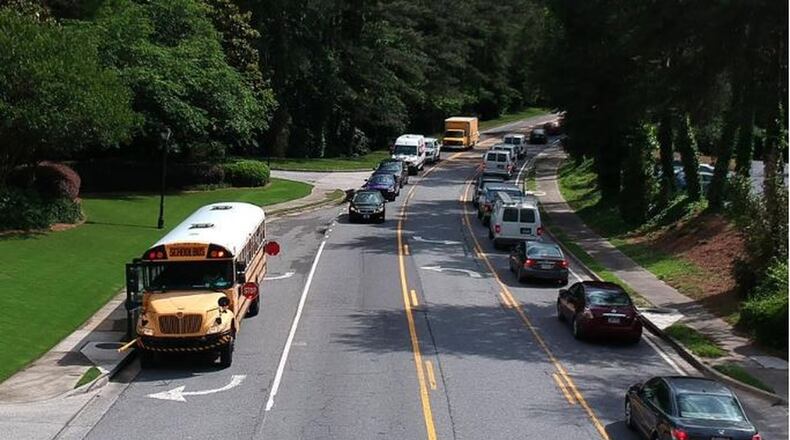CORRECTION: A previous version of this story misstated the number of children in Georgia who have died while crossing a road to a waiting school bus.
State lawmakers, backed by school and police officials, are planning to reverse the changes made to a bill about stopping for school buses that they say endanger children.
At hearings as brief as 25 seconds last year, state legislators amended the law that establishes when drivers must stop for a bus that is loading or unloading students.
For years, drivers in the oncoming lanes had to stop if there was no physical barrier. But the dozen-word amendment appeared to have erased that requirement, The Atlanta Journal-Constitution reported last summer.
Gov. Nathan Deal signed the bill into law over the objections of just about every school transportation official in the state. Law enforcement officials also were alarmed.
Seven students died in Georgia over a four-year period starting in the fall of 2010, one survey found. Last February, an 8-year-old died after she and her mother were hit by a car in DeKalb County while crossing to a school bus. Since July 1, there has been one fatality, according to the Georgia Department of Education. A boy was hit by a vehicle passing a bus in an oncoming lane in October in Colquitt County, the agency said.
School bus officials were the first to call attention to the amended law and are hoping to change it back.
"We just feel like it's for the safety of the students," said T. Carlton Allen, executive director of the Georgia Association for Pupil Transportation. The group for school bus operators has been working with Sen. Bill Heath, R-Bremen, who introduced Senate Bill 25 in the opening days of the current legislative session that began Jan. 14. He said he's heard from bus drivers, judges and prosecutors who support his bill.
And, in the House of Representatives, freshman Ginny Ehrhart said she is working on her own bill.
Ehrhart, R-Powder Springs, who succeeded her long-serving husband Earl, said she will file legislation that would compel oncoming drivers to stop for school buses unless there’s a physical barrier, like a concrete curb or a grass median.
That was long the law, but last year’s change appears to have made a painted turn lane an acceptable barrier. (The change didn’t affect drivers following a bus; they still must stop for flashing lights and an extended stop arm.)
Ehrhart said paint on a road is insufficient protection.
“To say that the change in the law ticked off everybody would be an understatement,” she said.
So why was the law changed?
RELATED | Why a small change in law could create danger for students
RELATED | Georgia's top lawyer confirms fears about change to school bus law
Deal’s office, in explaining the decision to sign it last year, noted the 15-page bill also, for the first time, legalized the use of automated cameras to enforce speed laws at school bus stops, a change supported by a bicycling advocacy group.
The change to the requirement for a physical median appeared to be an afterthought, since it was vetted in brief hearings. One Senate committee spent 25 seconds discussing it and another put about two minutes into it, the AJC reported in July.
Ambiguity was also a complicating factor.
When lawmakers passed the bill they had a legal opinion — which Deal cited — that said it didn't change the stopping requirement. But, as the AJC reported in August, a subsequent opinion from the state's top lawyer, Attorney General Chris Carr, said the amendment did change the requirement: drivers no longer must stop if there's a painted turning lane between them and a bus, it said.
There’s been speculation that the amendment was put in last year because someone important got a traffic ticket. Heath doubts the wording of the amendment was accidental, but hasn’t found the source for it. Final adoption came 10 minutes after midnight when the legislative session was supposed to have ended, he noted.
“I’m not sure anyone will admit to putting our students in harms way,” he said.
About the Author




